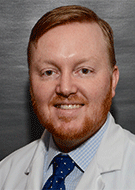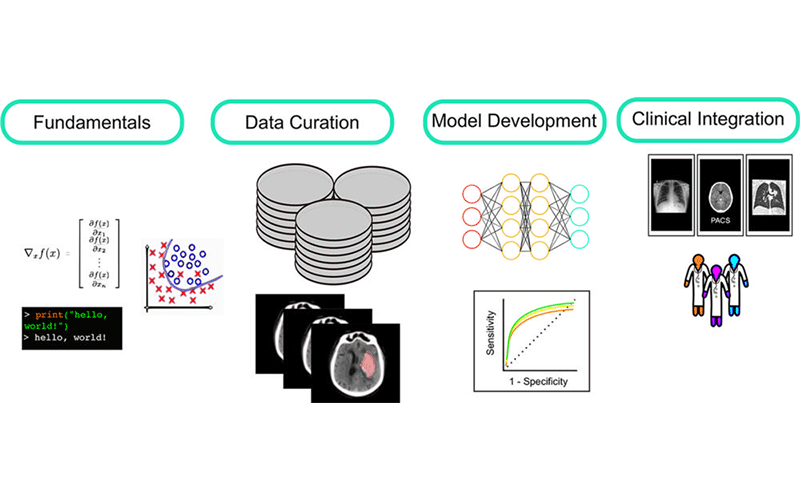Data Science Pathway Prepares Radiology Residents for Machine Learning
Artificial intelligence curricula have potential to transform medicine

A recently developed data science pathway for fourth-year radiology residents will help prepare the next generation of radiologists to lead the way into the era of artificial intelligence and machine learning (AI-ML), according to a special report published in Radiology: Artificial Intelligence.
Applications in radiology are already arriving at a staggering rate. Yet organized AI-ML curricula are limited to a few institutions and formal training opportunities are lacking.
Three senior radiology residents at Brigham and Women’s Hospital (BWH) in Boston recently helped devise a data science pathway to provide a well-rounded introductory experience in AI-ML for fourth-year residents. The pathway combines formal instruction with practical problem-solving in collaboration with data scientists.
“Across the nation there are a number of radiology residency programs that are trying to figure out how to integrate AI into their training,” said the paper’s co-lead author Walter F. Wiggins, MD, PhD. “We thought that perhaps our experience would help other programs figure out ways to integrate this type of training into either their elective pathways or their more general residency curriculum.”
Pathway Provides Opportunities for Residents to Understand ML Tools for Image Analysis
The pathway provides an immersion into AI-ML through a flexible schedule of educational, experiential and research activities at the Massachusetts General Hospital (MGH) & BWH Center for Clinical Data Science (CCDS). Dr. Wiggins and his resident colleagues, M. Travis Caton, MD, and Kirti Magudia, MD, PhD, were exposed to all aspects of AI-ML application development, including data curation, model design, quality control and clinical testing. The residents contributed to model and tool development at multiple stages, and their work during the pilot period led to 12 accepted abstracts for presentation at national meetings. Feedback from the pilot project resulted in the establishment of a formal AI-ML curriculum for future residents.
“Radiologists have always had to manage, analyze and process data in order to be able to do their work,” Dr. Wiggins said. “We already have the underlying skill sets and infrastructure that we can tap into to allow residents with an interest in AI and ML to really develop and become leaders in applying these skills clinically.”
The pathway provided ample opportunities for the residents to work directly with data scientists to better understand how they approach image analysis problems with ML tools. This communication, in turn, helped the data scientists better understand how radiologists approach a radiology problem in a clinical setting. The data scientists could be easily implemented in clinical practice.
“An important component of a curriculum like this is to learn the language the data scientists speak and teach them a little bit about the language that we as radiologists speak so that we can have better, more effective collaborations,” Dr. Wiggins said. “Going through that process over several different projects was where I think I gained the best experience throughout all of this.”
Dr. Wiggins credited Katherine Andriole, PhD, director of Research Strategy and Operations at the CCDS, and Michael H. Rosenthal, MD, PhD, for their guidance and feedback as mentors of the project.
Earlier this year, Dr. Wiggins accepted a position as clinical director of AI at Duke Radiology in Durham, NC, where he hopes to utilize some of the lessons he learned from the pathway development process.
“I also hope that people from other institutions might read this manuscript and find something useful for integrating into their residency curricula or for developing specialized pathways for informatics and/or data science,” he said.
For More Information
Access the Radiology: Artificial Intelligence study, “Preparing Radiologists to Lead in the Era of Artificial Intelligence: Designing and Implementing a Focused Data Science Pathway for Senior Radiology Residents.”
Read previous RSNA News stories on artificial intelligence:
